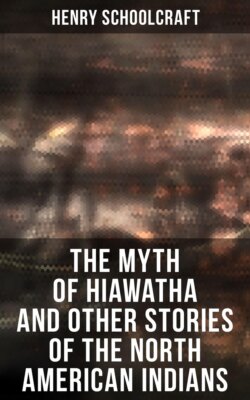Читать книгу The Myth of Hiawatha and Other Stories of the North American Indians - Henry Rowe Schoolcraft - Страница 3
На сайте Литреса книга снята с продажи.
PREFACE.
ОглавлениеTable of Contents
There is but one consideration of much moment necessary to be premised respecting these legends and myths. It is this: they are versions of oral relations from the lips of the Indians, and are transcripts of the thought and invention of the aboriginal mind. As such, they furnish illustrations of Indian character and opinions on subjects which the ever-cautious and suspicious minds of this people have, heretofore, concealed. They place the man altogether in a new phasis. They reflect him as he is. They show us what he believes, hopes, fears, wishes, expects, worships, lives for, dies for. They are always true to the Indian manners and customs, opinions and theories. They never rise above them; they never sink below them. Placing him in almost every possible position, as a hunter, a warrior, a magician, a pow-wow, a medicine man, a meda, a husband, a father, a friend, a foe, a stranger, a wild singer of songs to monedos or fetishes, a trembler in terror of demons and wood genii, and of ghosts, witches, and sorcerers—now in the enjoyment of plenty in feasts—now pale and weak with abstinence in fasts; now transforming beasts and birds, or plants and trees into men, or men into beasts by necromancy; it is impossible not to perceive what he perpetually thinks, believes, and feels. The very language of the man is employed, and his vocabulary is not enlarged by words and phrases foreign to it. Other sources of information depict his exterior habits and outer garb and deportment; but in these legends and myths, we perceive the interior man, and are made cognizant of the secret workings of his mind, and heart, and soul.
To make these collections, of which the portions now submitted are but a part, the leisure hours of many seasons, passed in an official capacity in the solitude of the wilderness far away from society, have been employed, with the study of the languages, and with the very best interpreters. They have been carefully translated, written, and rewritten, to obtain their true spirit and meaning, expunging passages, where it was necessary to avoid tediousness of narration, triviality of circumstance, tautologies, gross incongruities, and vulgarities; but adding no incident and drawing no conclusion, which the verbal narration did not imperatively require or sanction. It was impossible to mistake the import of terms and phrases where the means of their analysis were ample. If the style is sometimes found to be bald, and of jejune simplicity, the original is characteristically so. Few adjectives are employed, because there are few in the original.1 The Indian effects his purposes, almost entirely, by changes of the verb and demonstrative pronoun, or by adjective inflections of the substantive. Good and bad, high and low, black and white, are in all cases employed in a transitive sense, and with strict relation to the objects characterized. The Indian compound terms are so descriptive, so graphic, so local, so characterizing, yet so flexible and transpositive, that the legends derive no little of their characteristic features as well as melody of utterance from these traits. Sometimes these terms cannot be literally translated, and they cannot, in these cases, be left out without damaging the stories.
With regard to the thought-work of the legends, those who have deemed the Indians exclusively a cruel and blood-thirsty race, always seeking revenge, always invoking evil powers, will not be disappointed that giants, enchanters, demons, and dark supernatural agencies, should form so large a part of the dramatis personæ. Surprise has been expressed,2 that the kindlier affections come in for notice at all, and particularly at the occurrence of such refined and terse allegories as the origin of Indian Corn, Winter and Spring, and the poetic conception of the Celestial Sisters, &c. I can only add, that my own surprise was as great when these traits were first revealed. And the trait may be quoted to show how deeply the tribes have wandered away from the type of the human race in which love and affection absorb the heart;3 and how little, indeed, we know of their mental character.
These legends have been out of print several years. They are now reproduced, with additional legendary lore of this description from the portfolios of the author, in a revised, and, it is believed, a more terse, condensed, and acceptable form, both in a literary and business garb.4
HENRY R. SCHOOLCRAFT.
Washington, D.C., April 28, 1856.
